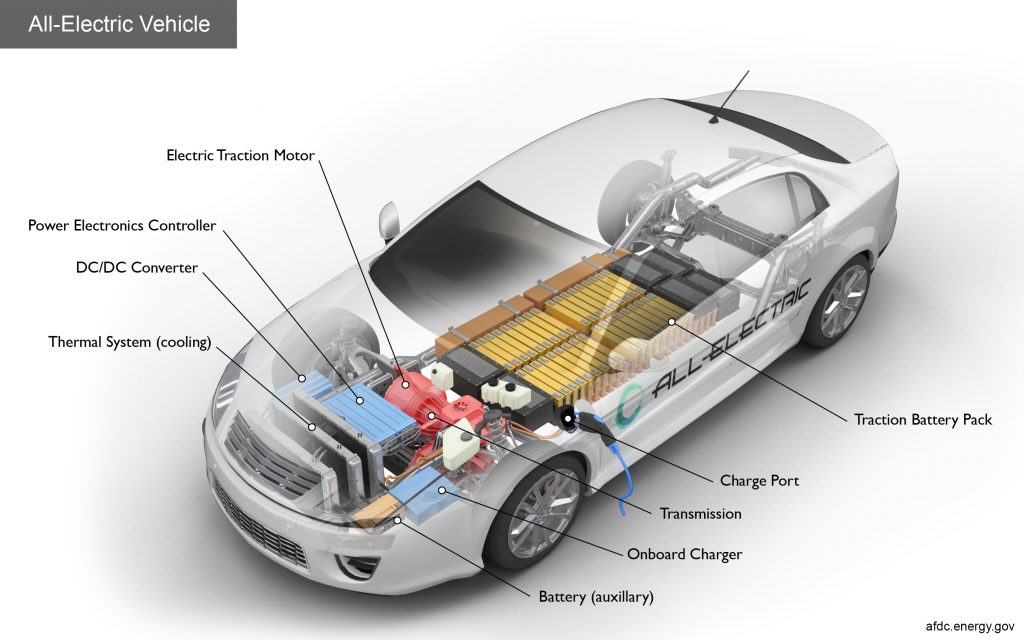If you’re an EV enthusiast, you’re probably curious about the longevity of their batteries. If you search this question, you’ll likely find out about their lifespan or the average millage of an EV. But how long would your electric car battery last if you leave it idling?
We’ve all feared our phone batteries dying on us in a time of need. And for some, that worry has moved over to their electric vehicle.
What if your car dies when you’re nowhere near a charging station? Is it possible for your electric car’s battery to die when you leave your car idling?
Many have asked this question, stating that it’s a significant flaw or even a scam. But do electric cars even idle? And if so, how long can you leave an electric car idling before the battery dies?
Table of Contents
How Long Can An Electric Car Idle Before Dying?
You may have heard a rumor about EVs and idling doing the rounds. Well, we’re here to confirm that this is indeed just a rumor — electric cars do not idle.
We’ll get into the science behind why electric cars don’t idle in a minute. But let’s first look at an example scenario.
Imagine that you’re stuck in a traffic jam on a sweltering day. There are no charging stations nearby, and you’re worried that leaving your electric car idling will drain its battery.
Well, as we’ve just said, electric cars don’t idle, so there’s no way your battery will die. The only time your EV uses electricity to drive is when it’s actually moving. So you could say that the car ‘turns off‘ when you’re stationary.
But What About The AC?
However, if you’re stuck in traffic on a sweltering or freezing day, you’ll need to use your car’s climate control. Sure, that draws power from the battery, but it’s a minuscule amount.
During an interview, Dr. Katherine Collett (the Senior Postdoctoral Researcher in Energy System Transitions at the Energy and Power Group) from the University of Oxford shed some light on the subject. She stated that if your car used 2kW of power for climate control, a half-full battery would still last 10 hours.
However, it’s unlikely that your car would use 2kW due to the efficiency of today’s systems and the car’s insulation. It’s also important to note that these calculations are based on a Nissan Leaf with a 40kWh battery.
Why Does An Electric Car Not Idle?

Source: afdc.energy.gov
You can’t leave an electric car idling because the motor doesn’t need to stay on. Since the motor provides instant electricity, there’s no need for it to stay running.
Conversely, internal combustion engines have a longer rev uptime. That’s why most ICE car owners prefer to keep their cars idling.
Let’s go into a little bit more detail on each of these. First, what are the differences between an internal combustion engine (ICE) and an EV’s motor? How does each of these work?
How Do EV Motors Work?
EV motors work by converting DC to AC, which turns the motor. When you press the accelerator, it tells the controller how much energy the motor needs to rotate. Since this process is instant, there’s no need to leave your electric car idling. Instead, the car simply turns off.
EV motors are based on the concept of magnetism. It takes advantage of the fact that like-poles repel and opposites attract. Then, using an electromagnet and inverter, the motor uses this push-pull motion to turn the car’s wheels.
When you press accelerate, power from the battery flows to the electromagnet, which turns the car’s wheels. However, when the vehicle is stationary, it doesn’t require any power from the battery. Hence, EVs don’t idle.
This video by Tech Vision sums up how an EV motor works in an informative package.
Why Do ICEs Need To Idle?
Technically, internal combustion engines don’t need to idle. So the only reason we leave our cars idle is that it’s more convenient.
If you turn the car off, it takes a second to turn back on. So if you’re stuck in a traffic jam and need AC, you’ll likely leave your car idle. Additionally, if the traffic moves slowly, it’s more convenient to let the car idle instead of turning it off.
In fact, many cars in the higher price range automatically turn off when you start. This saves petrol and decreases carbon emissions.
Do Electric Cars Turn Off When You Stop?

Source: techwireasia
There’s no need for the motor to run when an EV stops. Therefore, the car’s motor turns off. But that doesn’t necessarily mean that the vehicle is “off.”
Today’s EVs use their battery to power AC and audio units. The battery also powers the car’s onboard computer. So even though the motor has stopped running, the car still has power and can be considered.
It would be quite the hassle if every time you stopped at a traffic light, your radio and AC turned off.
Final Thoughts
Electric cars aren’t like conventional cars when idling and stopping/starting. Vehicles with internal combustion engines keep burning fuel when left running. On the other hand, EVs turn off – the motor stops running.
Many are concerned that their EV’s battery will run out if they leave the car on. After all, the air conditioning, radio, and onboard computer still use the battery.
However, you need not worry about this happening. Your car will still power onboard devices for at least 24hrs before the battery dies.
It’s relieving to know that your battery won’t die in the middle of a traffic jam from using the AC.
If you have any other questions or would like to know more about EVs, feel free to join our community!

